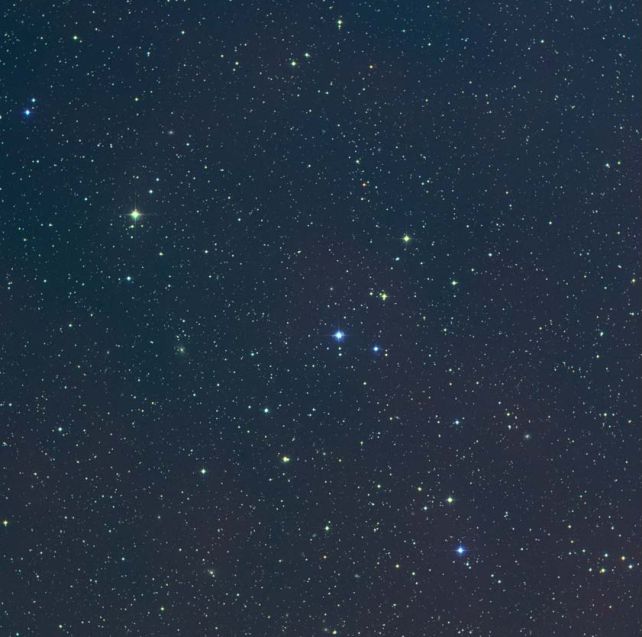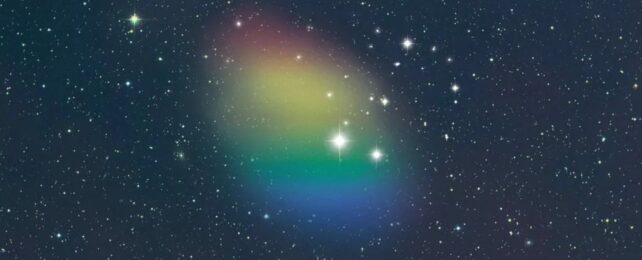A newly discovered object is stretching our understanding of what constitutes a galaxy.
Called J0613+52, this massive blob of something some 270 million light-years away appears to have no stars whatsoever. At least, none that can be seen. It's just a haze made of the kind of gas that's found between stars in normal galaxies, drifting around by its lone self like an absolute badass.
Its mass and motion appear to be normal for what we'd expect of a spiral galaxy… in fact, if you extracted the stars from a spiral galaxy like the Milky Way or Andromeda, J0613+52 is pretty much what you'd end up with.
According to a team of astronomers led by astrophysicist Karen O'Neil of the Green Bank Observatory, it could be the first discovery of a primordial galaxy in the nearby Universe – a galaxy made up mostly of the gas that formed at the beginning of time.

The discovery – one made purely by chance – has been presented at the 243rd meeting of the American Astronomical Society.
"The GBT was accidentally pointed to the wrong coordinates and found this object," O'Neil says. "It's a galaxy made only out of gas – it has no visible stars. Stars could be there, we just can't see them."
The researchers were using the Green Bank Observatory to look for and study what are known as low surface brightness, or LSB, galaxies. These are galaxies, mostly small dwarf galaxies, that don't emit a lot of light, because most of their content is made up of gas and dark matter. Compared to other galaxies, they have very few stars.
The researchers were looking to measure the gas content and mass of LSB galaxies, so the survey was focused on looking for gas, rather than stars, using the Green Bank Telescope, the Arecibo Telescope, and the Nançay Radio Telescope. Green Bank and Nançay were supposed to be looking at the same patch of sky for part of the survey, but someone made a typo in the Green Bank coordinates, pointing it instead at a patch of sky that hadn't been examined before.

There, the researchers found the signature of hydrogen gas, with a strength expected from a spiral galaxy. The researchers were even able to identify the Doppler shifting of the radio waves associated with galactic rotation – lengthening wavelengths from the part rotating away from us, and shortening wavelengths in the part rotating towards us.
But in Green Bank's radio data, there was no sign of stars at all. The object appears to be isolated and undisturbed, having experienced no gravitational interactions over the 13.8 billion-year course that would have disrupted the gas, either tearing it apart, or pushing it into the clumps needed to trigger significant star formation. This makes J0613+52 an object unlike any other we've ever seen before.
"What we do know is that it's an incredibly gas rich galaxy," O'Neil says.
"It's not demonstrating star formation like we'd expect, probably because its gas is too diffuse. At the same time, it's too far from other galaxies for them to help trigger star formation through any encounters. J0613+52 appears to be both undisturbed and underdeveloped. This could be our first discovery of a nearby galaxy made up of primordial gas."
Because it's so dark, studying it further could prove challenging. It might not be possible to see it in other wavelengths than radio. And it appears to be rare, since this is the first of its kind ever detected. The researchers suggest that it might be worth scouring the skies with powerful radio telescopes to look for other objects like it.
Given the way matter in the Universe seems drawn together, however, it might be that J0613+52 is one of a kind, at least in nearby space – a cloud of gas unchanged since the dawn of the Universe, drifting alone for billions of years. What an absolute wonder.
The discovery has been presented at the 243rd meeting of the American Astronomical Society.
